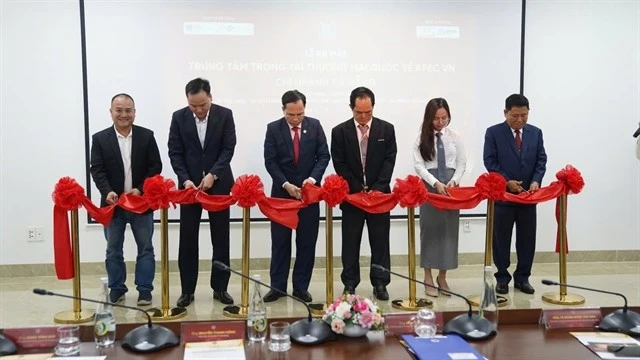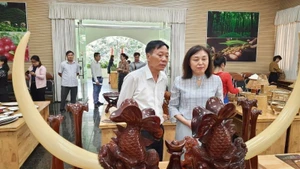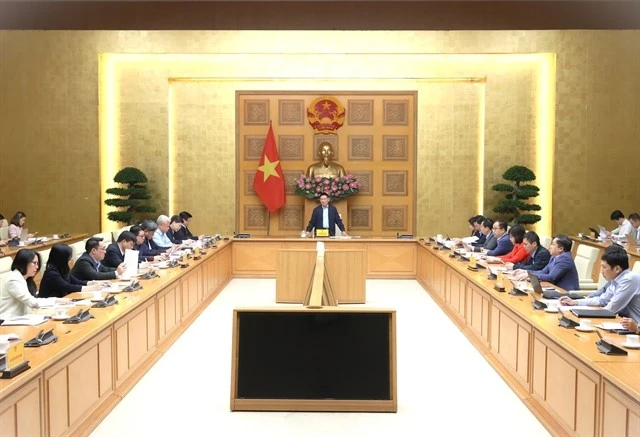Dung noted that the Politburo’s Resolution No. 57-NQ/TW on making breakthroughs in science – technology development, innovation, and national digital transformation emphasises the requirement for strongly promoting science, technology, and innovation, considering them a key driving force for fast and sustainable growth, especially in strategic and leading-edge technology sectors capable of creating new value and long-term national competitiveness.
Based on this orientation, Decision No. 1131/QD-TTg of the Prime Minister details the targets, tasks, and measures for developing pioneering technologies, while identifying 11 strategic technology sectors and 32 strategic technological products of the country. This serves as an important stepping stone for building a strategic technology ecosystem, ensuring coherence from policies, mechanisms, human resources, and infrastructure to technology research, development, and commercialisation.
The Deputy PM affirmed that VIN, with over 2,000 experts worldwide, is a hub for Vietnamese knowledge and an important resource that will help the Government implement its strategy for developing pioneering technology sectors. In the new trend, continuing to expand the network and enhancing the quality of contributions from the expert community will play a key role in promoting the 11 strategic sectors, creating a new growth impetus for the economy.
However, he acknowledged that Viet Nam is still struggling to identify major questions and design strong-enough programmes capable of leading the development of strategic sectors. Therefore, he expressed his hope that experts will propose practical, feasible, and breakthrough solutions instead of general analyses.
In particular, Dung emphasised the need for mechanisms to attract “chief engineers” and “chief architects” for national technology projects, considering these two positions as crucial for steering foundational programmes.
In the field of semiconductors, Vo Duc Thang, a representative of the VIN Network in Taiwan (China) and Co-Principal Investigator at the INTENSE Programme in Viet Nam, highlighted the great potential for cooperation between the two sides. Over 40,000 Vietnamese students are currently studying in Taiwan, half of whom are in high-tech engineering fields. Specifically, the INTENSE Programme has trained more than 200 students and will offer an additional 880 STEM – semiconductor scholarships in 2026.
Training models that involve businesses, along with connection activities and cooperation offices in various localities, are creating a crucial foundation for Viet Nam to build a high-quality semiconductor engineering workforce, he added.
Ngo Minh Hieu, Founder and Director of an anti-fraud project, emphasised that for Viet Nam to develop AI, digital finance, or govtech, it must first establish a safe and reliable digital environment.
Experts also proposed establishing a national anti-fraud and cybercrime centre based on the Singapore model, connecting data from banking, telecommunications, social networks, and investigation agencies to provide real-time risk alerts. At the same time, it is necessary to implement a data sandbox that allows businesses and research institutes to use non-personal data to develop AI models and early warning systems.
In the field of AI and digital twins, Lo Van Ba, Country Director of Dassault Systèmes Viet Nam, emphasised the great potential of Virtual Twin technology combined with AI in enhancing R&D capabilities, optimising production, and shortening the time to market. Ba believes that Viet Nam is well-positioned with favourable conditions to directly adopt the new-generation digital industrial model, from digital infrastructure and a young workforce to the growing demand for modernisation in strategic sectors.
Dassault Systèmes proposed collaborating with the National Innovation Centre (NIC) to establish a Digital Twin and AI R&D Centre in Viet Nam to develop pilot models in aerospace, semiconductors, smart transportation, robotics, and smart cities, and mobilising international resources to build a team of Digital Twin - AI engineers and strengthen the country’s innovation capacity.
















